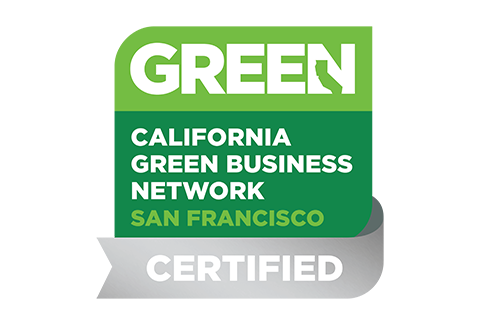Navigating the Opportunity Zone Program
A new economic development tool created to stimulate investment in low-income communities known as “Opportunity Zones” has been attracting attention of investors, developers and business owners alike.
The Opportunity Zone Program emerged as part of a bipartisan effort to induce private investors to infuse capital into low-income communities, that otherwise would rely upon grants or investments from non-profit organizations, federal, state or local governments, and community development organizations, to stimulate growth.
The Opportunity Zone Program attracts private capital to Opportunity Zones by extending tax advantages to investors in “Qualified Opportunity Funds” which, in turn, invest in projects or businesses located in these zones. The incentive is not limited to real estate investments. Rather, businesses that deploy capital and operate in Opportunity Zones can benefit from this incentive.
Moreover, unlike other tax incentive programs, the Opportunity Zones Program is available to any taxpayer with capital gains to defer, and there is no cap on the benefits that can be claimed under the program. As a result, the program is causing a stir in both the start-up and development community, driving up pricing on real estate sales and lease rates within these communities.
Unanswered Questions
Despite widespread interest in the Opportunity Zone Program, guidance from the Treasury Department on specific program requirements has trickled out.
Proposed regulations were issued in late October of 2018, but those regulations left many questions unanswered.
In December of 2018, President Trump signed an executive order establishing the White House Opportunity and Revitalization Council, which is tasked with assessing ways to minimize regulatory and administrative costs of investing in Opportunity Zones. The executive order requires the council to submit a work plan within 90 days of the order, along with a list of best practices and recommended statutory, regulatory and policy changes, but the government shutdown will likely disrupt this time table.
Nevertheless, based on the guidance that has been issued, the following information can help you navigate through the Opportunity Zone Program requirements.
Capital Gains Deferral
Under the Opportunity Zone Program, taxpayers defer recognizing capital gains if, within 180 days of when such gains would otherwise be recognized, they make an equity investment in a Qualified Opportunity Fund. The initial deferral does not last forever.
Once the fund interest is sold, or on December 31, 2026, whichever is earlier, the investor pays tax on the lesser of: (i) the deferred capital gain, or (ii) the fair market value of the Qualified Opportunity Fund investment less its tax basis. This basis initially equals zero, but after 5 years, it increases by 10% of the capital gain deferred, and after 7 years, it increases another 5%. As a result, a taxpayer may permanently exclude up to 15% of capital gains invested in a Qualified Opportunity Fund, provided they acquire their fund interest before December 31, 2019.
After 10 years, the tax basis in the Qualified Opportunity Fund investment equals its fair market value on the date it is sold, such that there is no taxable gain on the sale. Thus, taxpayers may avoid tax on any post-acquisition appreciation of the fund investment. The existing Opportunity Zone designations expire on December 31, 2028. Nevertheless, taxpayers investing in a Qualified Opportunity Fund on or before that deadline, can claim the benefit of the 10-year basis step-up until December 31, 2047.
Qualified Opportunity Fund
A newly formed, or pre-existing, U.S. entity treated as a corporation or partnership for tax purposes (including LLCs) may elect to be a Qualified Opportunity Fund, provided its intent to invest in Opportunity Zones is stated in its organizing documents. The fund must invest 90% of its assets in “Qualified Opportunity Fund Business Property” or “Qualified Opportunity Fund Businesses.” The 90% test is measured by averaging the percentage of qualified property held by the fund six months after it is formed, and the last day of its taxable year.
Qualified Opportunity Fund Business Property is tangible property purchased from an unrelated seller that is originally used in an Opportunity Zone, or that is substantially improved within 30 months. Improvements to property will be deemed “substantial” if they double its tax basis. In cases where property includes land, the purchase price allocated to land will not be counted in determining whether the property’s basis has doubled.
How Businesses Are Tied to Opportunity Zones
Qualified Opportunity Zone Businesses are active businesses with certain ties to an Opportunity Zone, including:
- At least 70% of the tangible property owned or leased by the business is Qualified Opportunity Zone Business Property;
- At least 50% of total gross income of the business is derived from the Opportunity Zone;
- A substantial portion of the intangible property of the business is used in an active trade or business in the Opportunity Zone;
- Less than 5% of the average aggregate unadjusted bases of the property of the business is nonqualified financial property, which, among other things, includes cash, cash equivalents or debt held by the business; and
- The trade or business of the entity is not certain “sin” businesses including a golf course, country club, massage parlor, hot tub facility, suntan facility, racetrack or other facility used for gambling, or a liquor store.
Safe Harbor
The proposed regulations provide a safe-harbor for cash held by a business, provided it is held pursuant to a written plan and schedule that designates the cash as held for the purpose of acquiring, constructing, or substantially improving tangible property in the Opportunity Zone within 31-months, and the business substantially complies with the schedule. But this safe harbor is only currently extended to Qualified Opportunity Fund Businesses. It is still not clear if a similar safe-harbor rule will be extended to cash held at the fund level.
Practical questions still exist regarding the program, and investors will likely find that one or more issues exist for which there is no “certain” answer. However, current guidance makes investing in the program feasible.
Given the incentive under the program to invest prior to the end of 2019, it is clear many investors will dive in before Treasury answers all of their questions.


